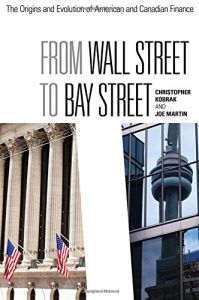Join getAbstract to access the summary!

Join getAbstract to access the summary!
Joe Martin and Chris Kobrak
From Wall Street to Bay Street
The Origins and Evolution of American and Canadian Finance
University of Toronto Press, 2018
What's inside?
Though they share a border, the United States and Canada maintain quite different financial sectors.
Recommendation
The United States and Canada together account for more than $23 trillion in global GDP growth. The wealth of each country resides in a political and commercial environment largely dominated by capitalism and buttressed by a robust financial ecosystem. But Wall Street and Bay Street represent two divergent schools of thought on capital markets, the role of regulation and market operations. Economic historians Joe Martin and Chris Kobrak highlight how the American and Canadian financial models developed and examine the institutional, cultural, political, and economic forces that shaped their growth and trajectory. Students of history, business executives and financial professionals will appreciate this detailed and perceptive analysis of US and Canadian finance.
Summary
About the Authors
The late Christopher Kobrak was a business history professor at the Rotman School of Management. Joe Martin directs the Canadian Business and Financial History Initiative at the Rotman School of Management.


















Comment on this summary